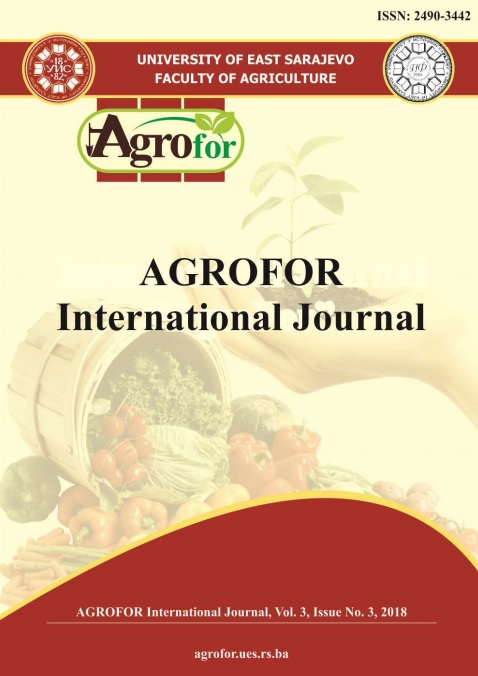LAND COVER BASED WATERSHED HEALTH ASSESSMENT
DOI:
https://doi.org/10.7251/AGRENG1803047HAbstract
The adoption of appropriate managerial approaches mainly depends upon proper
monitoring and consequent assessment of ecosystems health. Towards that, the
watershed health monitoring has gained recognition among regulating agencies
such as Environmental Protection Agency (EPA). However, its importance has not
been considerably taken into account by authorities in developing countries where
the outcome of such approach is essentially needed for effective and efficient
management of the ever-degrading ecosystems. To this end, the present article
introduces a simple and standardized approach of describing the overall watershed
health situation using risk based RelResVul framework. Towards this, three
indicators of reliability (Rel), resilience (Res) and vulnerability (Vul) have been
conceptualized and calculated based on the normalized difference vegetation index
(NDVI) for the Shazand Watershed, Markazi Province, Iran, as a case study. NDVI
is an important and commonly used vegetation index in research on global
environmental change. The primary data collected to create NDVI maps was multispectral
satellite images of path 165 and rows of 36 and 37, with a spatial
resolution of 30 m from the Landsat Satellite images for the sample year of 2014.
The results of RelResVul analysis showed that the overall condition of the Shazand
Watershed health in terms of Rel, Res and Vul was healthy, un-healthy and
moderately healthy, respectively with scores of 0.82, 0.17 and 0.50 out of 1.0. The
average watershed health index based on RelResVul framework was also obtained
0.34 varying from 0.04 to 0.46. Hence, it can be concluded that the Shazand
Watershed was in relatively un-healthy state from view of vegetation cover. The
maintenance and recovery of the Shazand Watershed health should be considered
as fundamental step to reach the integrated watershed management objectives.

